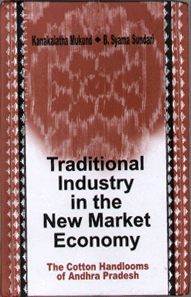 |
The importance of non-farm traditional enterprises in the
rural economy could hardly be overstated as India, in spite of being an agrarian
country, is not able to provide more than 100 days of farm work to the
agricultural labour in one full working year of 300 days. In fact, the poor in
this subcontinent are surviving due to their self-employment through free
enterprises and not the government welfare. Coming back to the handloom sector, it gives employment to the largest number of people next only to agriculture. The importance of this activity also lies in the fact that it is a home-based activity providing self-employment to skilled workers. Apart from being an employment provider, this activity needs very little capital investment and is extremely efficient in its use of energy, a scarce resource in India. Taking the larger picture, the economists keep hampering on the fact that handloom is no match for power looms in terms of productivity and economic profitability. The authors argue that this so-called profitability is, in fact, ‘private profitability’. Mahatma Gandhi used to say, " I believe in production by the masses and not mass-production." Our country needs more and more work for the teeming millions who are subsisting below the poverty line. So, the power looms may have benefited the rich but they turn out to be less desirable in terms of ‘social profitability’. |